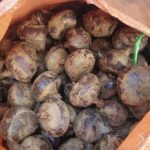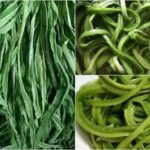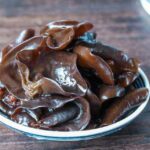Water chives, a wild herb that grows along the banks of canals and fields, is a perfect example of this. Once considered a neglected weed, water chives are now likened to “heaven’s bounty,” gracing the tables of urban diners at a not-so-modest price, yet remaining popular for its refreshing taste and natural nutritional value.
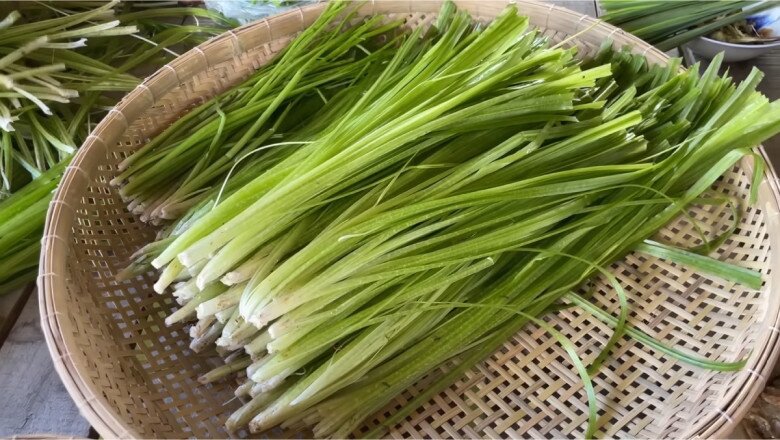
Image of water chives after being harvested by locals.
The scientific name for this plant is Alisma plantago-aquatica, while in folk terminology, it goes by various names such as trạch tả, water chives, and nước thơm cỏ. This herb typically grows wild in waterlogged areas such as canals, ponds, rice fields, and fish ponds, especially in the provinces of the Mekong Delta region of Southern Vietnam.
During the flood season (usually from the 6th to the 8th lunar month), when the water levels rise, water chives thrive, with their stems and leaves growing plump and juicy, reaching lengths of 50-60cm. They resemble common chives but possess a mild sweetness, a subtle fragrance, and a distinctive crispness.
Not only are water chives popular for their wholesome and clean nature, but they also pack a nutritional punch.
In traditional medicine, water chives (trạch tả) are believed to have a cooling property and a mild sweet taste. They are associated with the kidney and bladder meridians. This herb is said to possess diuretic, liver-detoxifying, and anti-inflammatory properties, and it aids in treating coughs, sore throats, and edema caused by kidney issues, while also helping to cool the body.
Meanwhile, modern medicine also highlights the presence of vitamins A, C, K, iron, magnesium, and fiber in this herb, benefiting digestion, bone health, eye health, and skin health. Regular consumption of water chives helps with bowel movement, heat dissipation, skin rejuvenation, and boosting immunity.
Once a humble rural dish, water chives have made their way into the dining tables of city dwellers and even the menus of restaurants specializing in countryside cuisine. The best way to enjoy water chives is to dip them in mắm kho (a type of fermented fish sauce). Additionally, water chives can be cooked in various delicious ways, such as stir-frying them with beef, making a shrimp and chive soup, or boiling them just right and dipping them in a fish or meat stew.
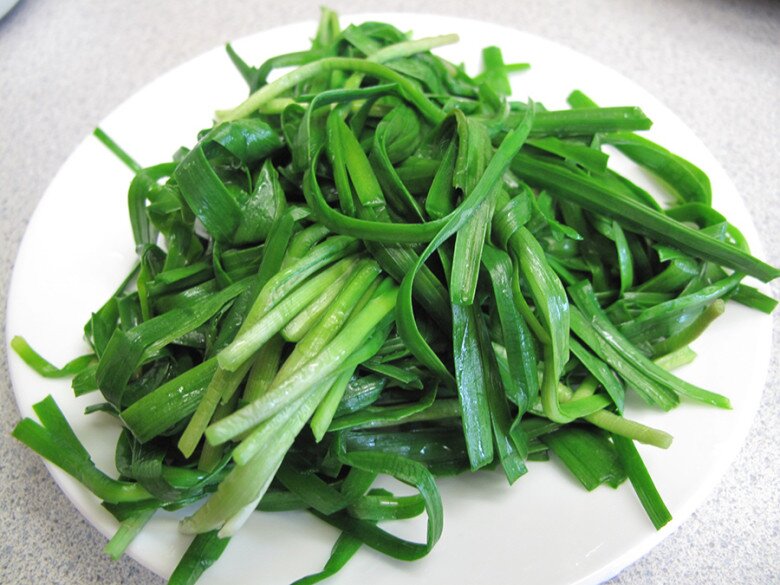
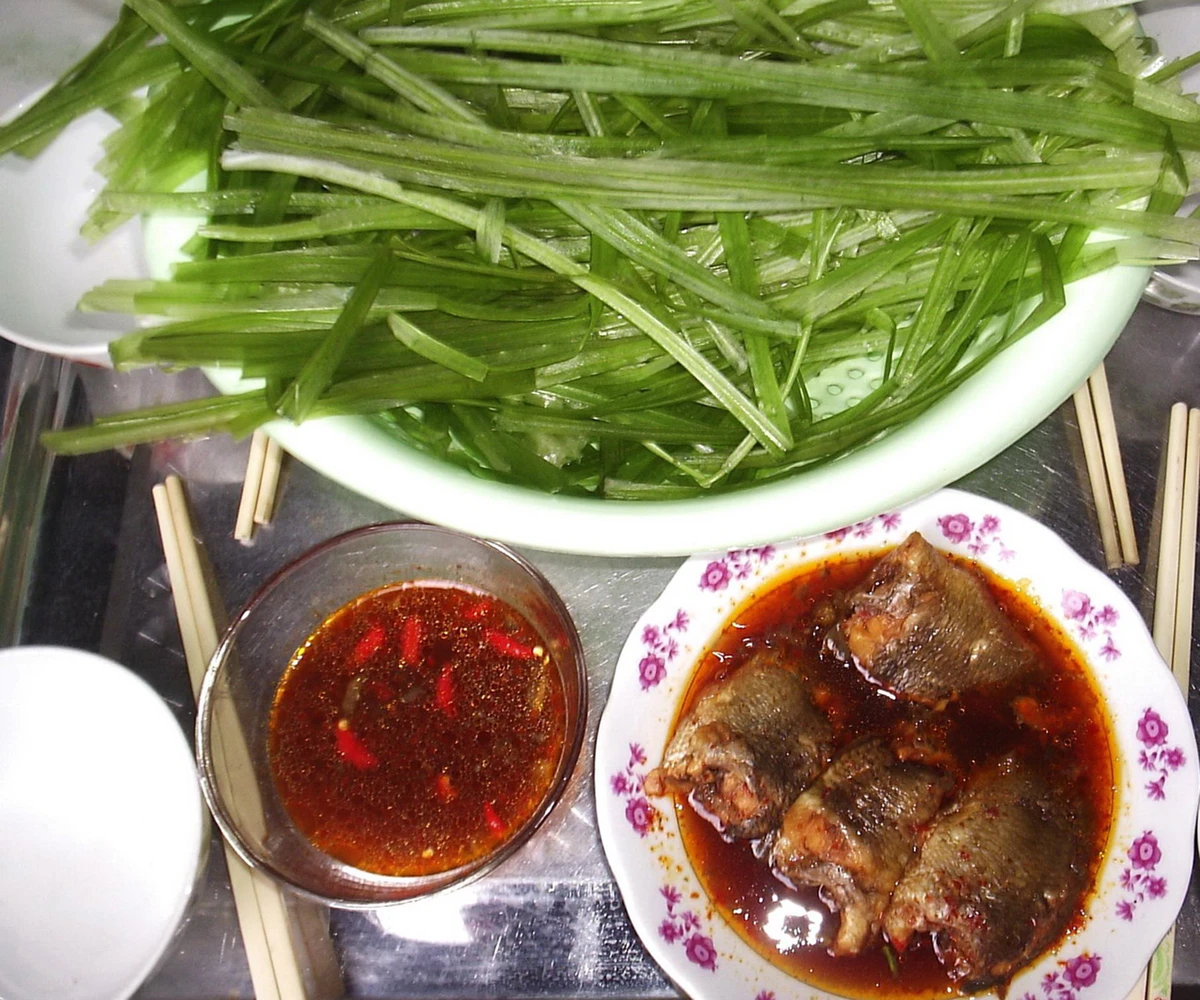
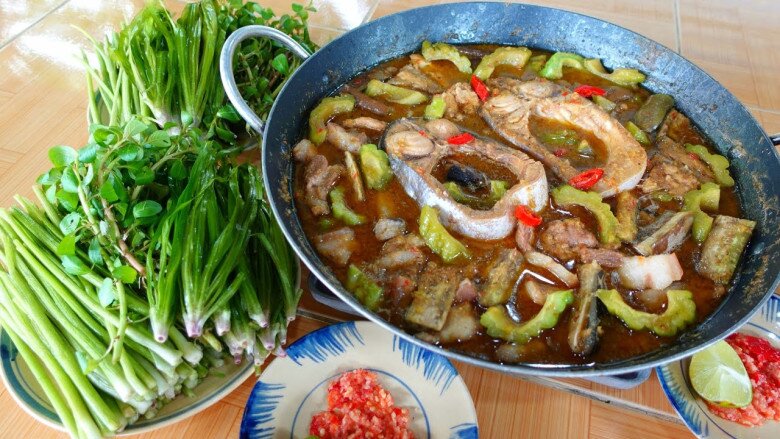
A variety of mouthwatering dishes showcasing the unique flavor of water chives.
Interestingly, water chives require no sowing, tending, or fertilizing like other vegetables. Most of the current supply is sourced from the wild, with locals having to wade through fields and immerse themselves in water to pluck each bunch, then meticulously clean each strand as the herb tends to be muddy. Due to this laborious process and the seasonal availability, water chives are all the more precious.
Today, this herb, once dismissed as a “weed,” now bears the label of “naturally grown vegetable,” finding its way into the hearts and homes of urban consumers. In the midst of industrialized food options, a bunch of crisp, sweet water chives evokes memories of rustic meals. This very simplicity has elevated water chives to a cherished symbol of rural life in the midst of bustling cities.
The Magic of Perilla Leaf Water: A Tonic with Many Benefits, But Beware of These 3 Pitfalls
Introducing the ultimate health tonic – perilla leaf water. A traditional remedy with a modern twist, this powerful elixir is packed with nutrients and antioxidants that boost your health and vitality. But many are still unaware of its full potential and how to unlock its benefits. Discover the secrets to harnessing the power of perilla leaf water and take your wellness to new heights.
7 Types of Fish You Should Buy Immediately: Nutrition Comparable to Ginseng, Cheaper than Bird’s Nest, Free of Chemicals
“Forget spending a fortune on ginseng or bird’s nest soup. The following seven types of fish are the ultimate ‘superfoods’ that can be easily found at your local market. Packed with essential nutrients and free from harmful chemicals or growth hormones, these fish are an affordable, accessible, and delicious way to ensure your family’s health and well-being. Simply choose wisely, and you’ll be serving up tasty, nutritious, and budget-friendly meals in no time!”

























